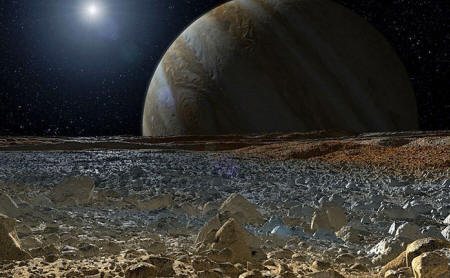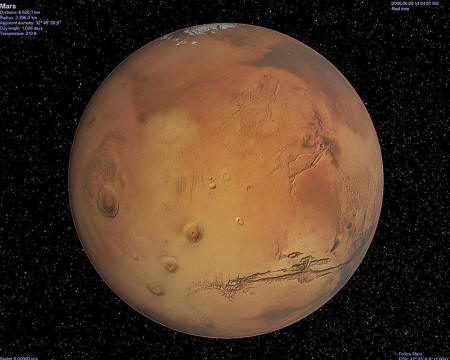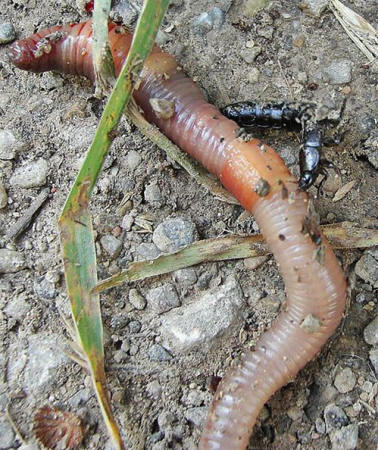|

by Hannah Osborne
January 7, 2014
from
IBTimes Website

Europa a
likely candidate
for extra-terrestrial
life
Extra-terrestrial life on alien worlds could be far more widespread
than previously thought, researchers have said.
According to a study by experts at the University of Aberdeen (Circumstellar
Habitable Zones for Deep Terrestrial Biospheres), the
number of habitable Earth-like planets in the universe could be far
greater than is currently thought.
Published in Planetary and Space Science, the team challenge
traditional ideas about "habitable zones" - the area of space around
a star or sun that can support life - by looking at life below
ground.
PhD student Sean McMahon explained:
"A planet needs to be not too close
to its sun but also not too far away for liquid water to
persist, rather than boiling or freezing, on the surface.
"But that theory fails to take into account life that can exist
beneath a planet's surface.
As you get deeper below a planet's
surface, the temperature increases, and once you get down to a
temperature where liquid water can exist - life can exist there
too."
Using a computer model that includes the
top five kilometers below the surface of the planet, researchers
found the habitable zone for an Earth-like planet is three times
bigger than currently believed.

Mars
Wiki Commons
Life on Mars would have to be far below the planet's surface.
If looking at the top 10km of a planet's surface, the habitable zone
in our solar system would extend out further than Jupiter and Saturn
- 14 times more than current thinking.
McMahon also noted that life could be present on "rogue" planets
that drift around in darkness:
"Rocky planets a few times larger
than the Earth could support liquid water at about five km below
the surface even in interstellar space (i.e. very far away from
a star), even if they have no atmosphere because the larger the
planet, the more heat they generate internally.
"It has been suggested that the planet
Gliese 581 d, which is 20
light years away from Earth in the constellation Libra, may be
too cold for liquid water at the surface.
However, our model suggests that it
is very likely to be able to support liquid water less than 2 km
below the surface, assuming it is Earth-like."
McMahon said he hopes more researchers
will use the study to consider how life might be found on other
planets:
"The results suggest life may occur
much more commonly deep within planets and moons than on their
surfaces. This means it might be worth looking for signs of life
outside conventional habitable zones.
"The surfaces of rocky planets and moons that we know of are
nothing like Earth. They're typically cold and barren with no
atmosphere or a very thin or even corrosive atmosphere.
Going
below the surface protects you from a whole host of unpleasant
conditions on the surface. So the subsurface habitable zone may
turn out to be very important.
Earth might even be unusual in
having life on the surface."

Earthworm
Wiki Commons
Space worms, bacteria and fungus most likely in planets with little
energy, McMahon said.
Speaking to IBTimes UK, McMahon said that while we currently have no
evidence of life outside our planet, it is feasible:
"We have a convention of saying that
where you have liquid water and the right sort of temperatures
and possible sources of food and energy - in those sorts of
conditions life could survive.
"What we've found is that those types of conditions are probably
very common below the surface and maybe more so than they are on
the surfaces. But that means that life can originate in these
environments below the surface of rocky planets."
Explaining why the idea of life below
the surface has not been considered outside our solar system before,
he said:
"It's partly a historical thing that
when the idea of a habitable zone was first formulated we did
not know as much about life below the surface.
"We're used to thinking about the possibility of life below the
surface in our own solar system, but we've stuck with this
notion of a habitable zone which was formulated in the early 90s
based around the idea that life is something that happens on the
surface.
Since then we've discovered that
life goes much further below the surface of the Earth.
"In our own solar system the best candidates for inhabited
planets and moons are Mars and some of the moons of Jupiter and
Saturn, which have ice on the outside and liquid water below. If
there is life on Mars today it's probably quite far below the
surface, where it's still warm."
And considering what life we might find
festering underneath the surface of alien worlds, he added:
"It depends on how much energy is
available.
On some planets and moons there might be quite a lot
but on others there would not be much. The other problem is that
there is not much space in the cracks and pores of rocks for
larger life forms to grow and become complex.
"If there is not much, you wouldn't find anything more than
bacteria, fungus and perhaps worms - the sorts of things you
find several miles below the earth's surface."
|




